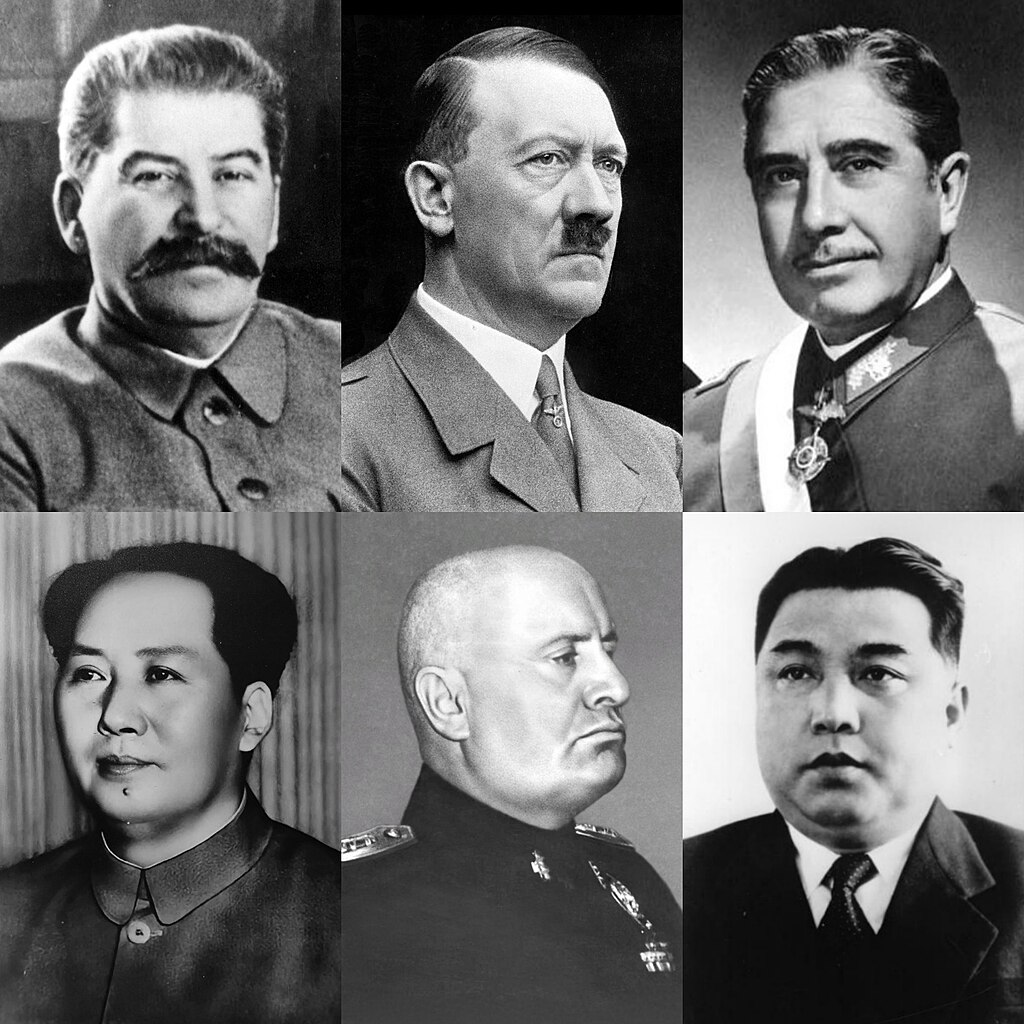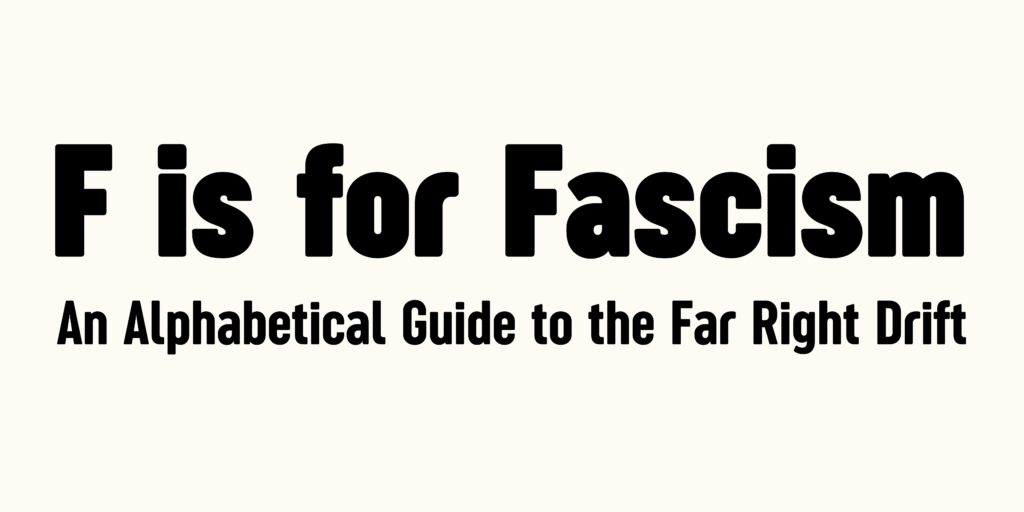Fascism this, fascism that. But tell me, how do you define fascism? You can certainly try to summarize fascism into a succinct definition, in fact if you Google the definition you’ll see:
“an authoritarian and nationalistic right-wing system of government and social organization.”
As someone with a political science background, there’s nothing I love more than broad concepts. This definition might be helpful to some as a reminder of what they have learned about fascism in the past, but it also leads to more questions. You might not know what authoritarian or nationalistic means, or what the implications of ‘social organization’ are. Additionally, the definition does not help with illustrating what fascism looks like.
And of course the one sentence definition isn’t going to cut it. So, I’ve put together an alphabet list to help unpack aspects of fascism, what it looks like, and how it manifests. I hope this guide helps you learn something new and/or offers some moments of reflection.
A is for Authoritarianism…
… a political system of centralized power either under a party or military rule which is maintained through the suppression of opponents. Power is centralized, meaning that governing decisions go through fewer checks and balances, or moved from “sub-unit” (e.g. states or provinces) government’s responsibilities to federal ones. Thus, the ruling party maintains power through emotional appeals to citizens, claiming that a ‘stricter’ rule is a necessary evil to combat a societal problem, or scapegoat.
B is for Bourgeois…
…an economic ruling class, which attempts to divert attention from discussions of class inequality to a unified national identity. Under fascism, ruling parties attempt to unify people, asking them to look beyond the economic realities of their station and instead to national identity and how it is being threatened.
C is for Conservatism…
… an ideology based in strong institutions, traditions, and nationalism which can be manipulated into and lend itself to authoritarian and fascist rule. Further, conservatism supports hierarchical institutions, from the nuclear family to the military to organized religion. Other beliefs that are valued include the valuing of individual rights (specifically property), recognizing social order and classes are necessary and natural, and following customs and conventions. It is important to recognize that conservatism is not fascism nor necessarily congruent with fascism, but many of the beliefs can be adapted by fascist movements to be appealing.

D is for Dictator…
… a ruler of a country with absolute (or at least an extraordinary amount of) power.
E is for Economy…
… which is protected and stewarded by neither socialist nor free-market policy. Fascist economies tend to rely on both private and public ownership, but private companies are expected to support the state and national interests.
F is for Fascism…
… which is what we’re trying to get to the bottom of here.

G is for Gender Roles…
… the ways men and women are supposed to act, which are emphasized to uphold the social order. Because of the importance of youth in the continuation of the fascist state, maternity and child rearing become supremely important. Women are expected to serve their children, husbands, and households. Additionally, the fascist state does not support homosexuality as reproduction is not the result of these partnerships.
H is for Hierarchy…
… the belief in a natural social order and stratification. Therefore, social differences, including gender, race, economic status, and ethnicity are seen as naturally occurring and that the privileges that come with certain differences are earned and righteous.
I is for Imperialism…
… the influence and control over other countries through militaristic, economic, diplomatic, and/or cultural means.
J is for Judicial Independence…
… the belief in the separation of powers and having a legal system free of influence from other branches of government, which is threatened by the centralization of power in a fascist state.
K is for Knowledge…
… which is moderated, repressed, destroyed, and created by the state through propaganda and indoctrination.
L is for Liberalism…
… a political ideology rooted in the rights of individuals, democracy, and secularism which is opposed by fascism. Because fascism depends on conservatives moving further right, liberalism becomes the common ‘enemy’.
M is for Militarism…
… the belief in a strong military to promote and expand national interests and values in imperialist efforts.

N is for Neo-Nazism…
… is the modern support for the resurgence of Nazism (Hitler’s brand of fascism), specifically white supremacy and the creation of a fascist state.
O is for One-Party State…
… one of the goals of a fascist state, where one party rules all and opposition is either outlawed or has limited ability to participate in elections.
P is for Populism…
… a political strategy in which to define ‘the people’ against a common enemy, such as ‘the elite’. Furthermore, right wing populism speaks to economic nationalism and the importance of the economy over social welfare.
Q is for Questioning…
… your relationship to your identity and encouraging a reexamination in light of the social hierarchy.
R is for Racism…
… the belief in superiority based on race, skin colour, or ethnicity. Consequently, this is a key aspect of fascism, the belief in racial purity comes from the nationalistic tendencies.
S is for Scapegoating…
… blaming societal issues on a minority group to advance nationalism and avoid accountability and addressing said issues.
T is for Tyranny…
… cruel and oppressive rule.
U is for Ultranationalism…
… the extreme manifestation of nationalism, which states superiority over all other cultures, peoples, and nations.
V is for Violence…
… something that is viewed as positive to a fascist regime and as a necessary action to promote national identity, whether against civilians and non-state actors, or through war.
W is for War…
… state violence through which national identity can be asserted and strengthened. Furthermore, war became a unifier for nations particularly due to “total wars” of the World Wars, where the line between citizen and combatant was erased. Today then, war is seen as an opportunity to spread ideology, accumulate more land and influence, or eliminate an unwanted group.
X is for Extremism…
… intolerant and extreme political and/or religious views that may result in violent or non-violent advocacy of those views. Generally a precondition to terrorism, victims of extremist movements are often minorities.

Y is for Youth…
… and the continuation of control through generational conditioning. Youth represents the future of the state but also the energy and youthfulness the regime desires to embody.
Z is for Zzz…
… because the fascist state is counting on you being asleep.


